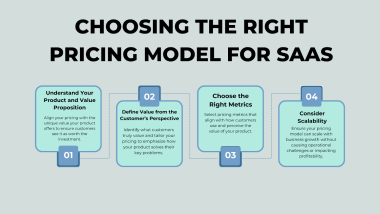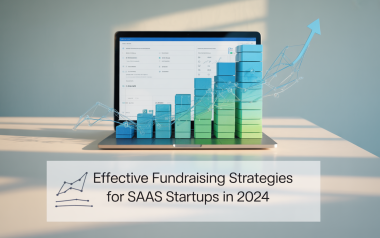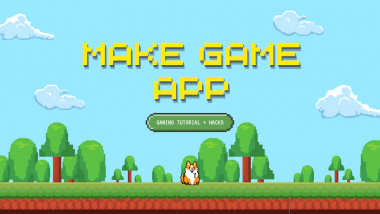In today’s digital economy, solo developers have unprecedented opportunities to create and launch successful SaaS products without relying on external funding. By focusing on specific niches, using cost-effective tools, and generating early revenue, independent developers can build sustainable businesses while maintaining creative control and ownership.
Key Takeaways
- Building a focused MVP that solves a specific problem is crucial for early validation and market entry
- Selecting the right tech stack and tools significantly reduces development costs and implementation time
- Creating an engaged community of early adopters provides invaluable feedback and organic growth
- Implementing revenue generation from day one helps sustain development without external funding
- Breaking down workload into manageable chunks helps solo developers avoid burnout and maintain momentum
Building a Focused MVP That Gets Traction
The journey to SaaS success begins with identifying a specific problem that needs solving. Rather than creating a product with broad appeal, solo developers should target distinct niches where competition is less intense and user needs are more defined.
Validation comes next and should happen before writing code. Create a simple landing page describing your solution and collect email addresses from interested users. Use tools like Typeform to conduct surveys and interviews with potential customers to confirm demand for your solution.
When defining your MVP features, remember that less is often more. Focus on the core functionality that delivers your unique value proposition and resist the temptation to add nice-to-have features. Here are some guidelines for MVP development:
- Include only features that directly solve the main problem
- Design for simplicity and ease of use
- Build with scalability in mind, but don’t over-engineer
- Plan for fast iterations based on user feedback
Selecting Cost-Effective Development Tools
The right tech stack can make or break a solo developer’s SaaS project. Strategic tool selection helps reduce development time and costs while ensuring product quality and scalability.
Modern frameworks and platforms offer plug-and-play components that handle common SaaS requirements. Consider these essential categories when building your tech stack:
- Programming language and framework (Node.js, Django, Ruby on Rails)
- Database solution (PostgreSQL, MongoDB)
- Authentication and user management tools (Auth0, Supabase)
- Payment processing (Stripe, Paddle)
- Hosting and deployment (AWS, Vercel, Digital Ocean)
Database architecture deserves special attention since it impacts both performance and scalability. Implement role-based access for better security and ensure your database can handle growing user numbers without requiring major restructuring.
Building a Community of Early Adopters
Early users are the lifeblood of any solo-developed SaaS. They provide crucial feedback and can become passionate advocates for your product if you engage with them effectively.
Social media platforms offer free or low-cost ways to build relationships with potential users. Share your journey, ask questions, and demonstrate your expertise in solving the problem your SaaS addresses.
Consider these community-building approaches that have worked for successful solo founders:
- Create valuable content related to your niche
- Join relevant communities where your potential users gather
- Offer early access or special pricing to initial users
- Respond personally to all feedback and feature requests
- Share your building process transparently
Generating Revenue From Day One
Bootstrapped SaaS products need to focus on early monetization rather than growth at all costs. Design your pricing model to start generating revenue as soon as possible, even with a limited feature set.
Data monetization represents an often-overlooked revenue opportunity for SaaS products. Consider how anonymized usage data might provide value to partners or users while respecting privacy concerns.
Effective bootstrapped SaaS monetization strategies include:
- Charging from the start, even for beta access
- Offering annual plans with discounts to improve cash flow
- Creating a free tier with clear upgrade paths
- Implementing usage-based pricing to align with customer value
Managing the Solo Developer Workload
The biggest challenge for solo developers is often the sheer volume of work across different disciplines. From coding and design to marketing and customer support, everything falls on one person’s shoulders.
Breaking projects into smaller, manageable tasks helps maintain momentum and prevent burnout. Set realistic timelines that account for the inevitable context-switching required when working alone.
Successful solo developers often follow these workload management practices:
- Use project management tools to track tasks and priorities
- Schedule specific days for different types of work (coding, marketing, support)
- Automate repetitive tasks where possible
- Know when to outsource non-core activities
- Build in time for learning and skill development
Embracing the Indie Hacker Mindset
The indie hacker approach emphasizes self-sufficiency and resourcefulness over external funding. This mindset values sustainable growth and profitability over rapid scaling and market domination.
Online communities like Indie Hackers, Product Hunt, and specialized Discord groups provide valuable support and learning opportunities. These communities can help solo developers overcome technical challenges and stay motivated during difficult phases.
Success as an indie hacker often means redefining what success looks like. A profitable SaaS product that generates sustainable income while allowing for work-life balance may be more valuable than a venture-backed startup with higher growth but also higher stress and less freedom.
Sources
HoffnMazor – Can a Solo Developer Build a SaaS App?
Product Hunt – Advice for a Solo Developer Launching His First SaaS
SoftSuave – Can a Solo Developer Build a SaaS App?
Five.co – Can a Solo Developer Create a SaaS App?
RapiDevelopers – Can a Solo Developer Build a SaaS App






